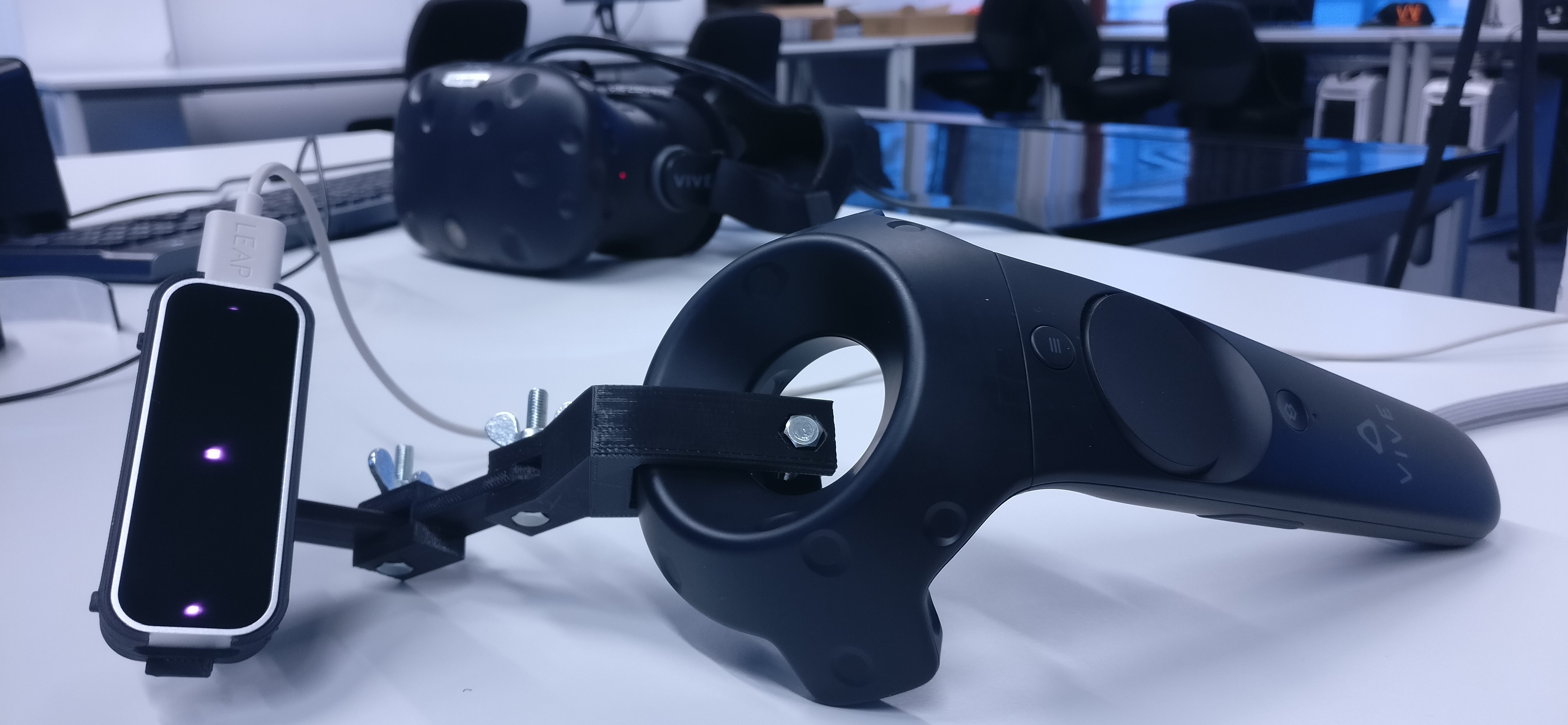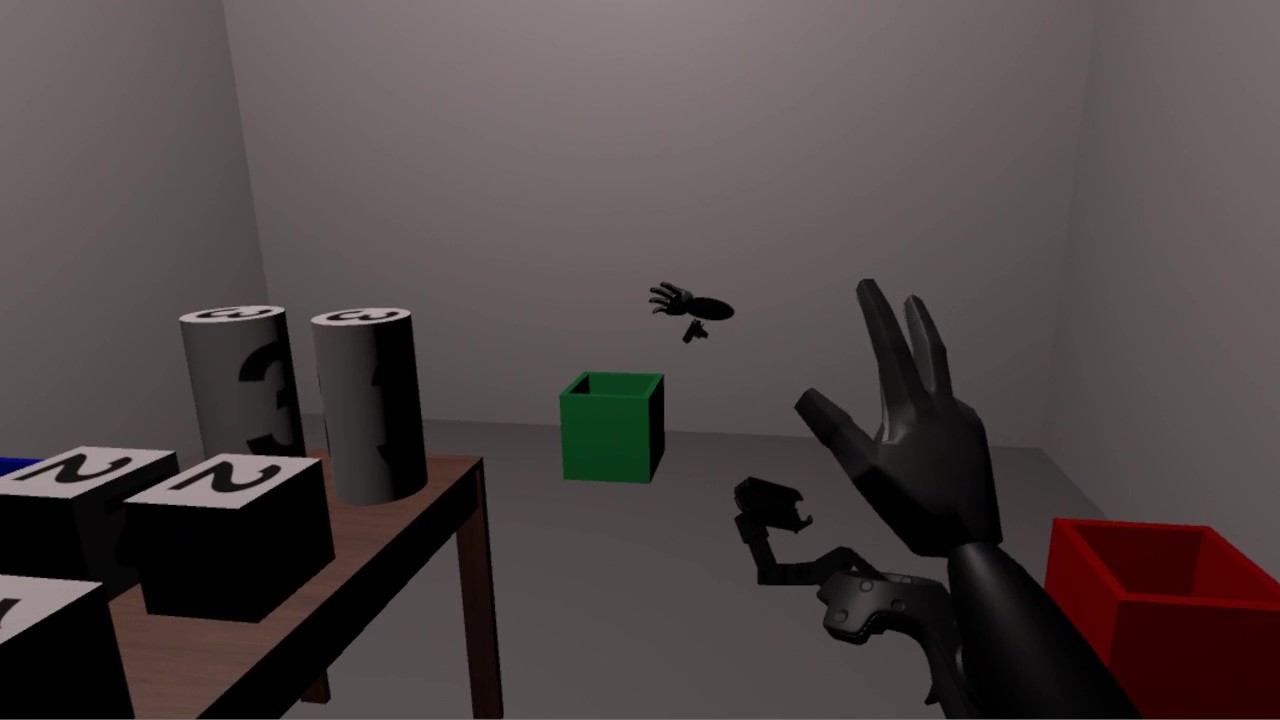HandsOnVR
Project Team
|
Supervision |
Goal
The implementation of an accurate self-avatar is one of the bigger challenges in the endeavor of creating an immersive Virtual Reality. As the interaction between humans and their environment is predominantly manual, an accurate representation of user's hands can be highly beneficial to this. The goal of our project was to create a system which is capable of precise and continuous hand tracking useful for social interaction in Virtual Reality as well as natural user interface applications. We wanted to create gear which not only uses equipment that many of the VR-users might already have, but that is also light and easy to build.Approach
Our idea was to improve the experience of multi-user interaction in Virtual Reality. Common approaches, like the setup of the Leap Motion on the Head-Mounted-Display, are far from perfect for multi-user experiences, as the hands are only tracked in a predefined area. This leads to a restriction of the users freedom of movement and decreased immersiveness.We were looking for setup in which the given technology (HTC Vive and Leap Motion) can be used simply without the disadvantage of restricted hand-tracking.
Instead, we wanted the user to be able to move about freely in their interaction with the Virtual Environment. Since hand tracking technology is not yet advanced enough to allow for an adequately sized tracking space, we need it to follow the user’s hands. Across several iterations, we were able to design a lightweight mount, which allows us to integrate HTC Vive Controllers with Leap Motion hand tracking devices. This is existing, widely available technology, enabling a great number of people to use and further develop our approach. Using the Unity Engine, we developed a system capable of letting multiple users share a Virtual Environment in and with which to interact using their hands instead of controllers. In doing so, we were confronted with many technological challenges. Many of these, such as the network implementation, we were able to overcome, others posed limitations yet to be solved.

The LeapMotion and the HTC Vive Controller connected by our 3D-printed mount.
Evaluation
We conducted a study in which participants were asked to put numbered objects into coloured boxes. The objects could be picked up by using a grabbing gesture and let go by opening the hand. After having familiarized themselves with the system this way, they were given a questionnaire in order to obtain an impression of the overall usability of the system. This turned out to be well above average, implying good usability.Apart from further investigating the usability and immersive capabilities of this technology, future work could comprise tackling aforementioned technological limitations, such as using more than one Leap Motion device per person, or increasing the number of simultaneous users.

First-person perspective during a multi-user sesssion.
